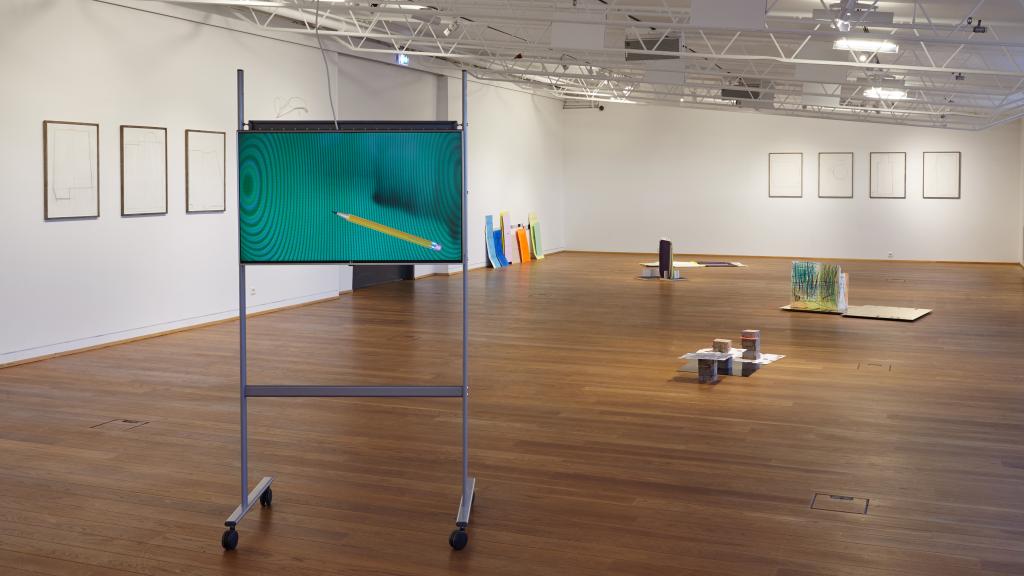Listening to bodies, materials and spaces
To listen to the body, and to listen to material and space is a magical action we all engage in at every moment, but we seldomly pay attention to. Perhaps we don‘t pay attention to it because we have been taught to disconnect from our bodies, and to forget the fact that we are sensing bodies. The systems we are raised in in Western societies make us believe that our rational mind is separated from the body and that all thought and knowledge is created through our conscious rationality. But these systems are becoming weaker, not least because the understanding of the human being that they are built on are gradually being replaced by a new understanding of what it is to be human. We don‘t understand the human being anymore as a rational, autonomous individual that stands outside its environment and controls it through rationality, rather we understand now that the human being is an embodied relational being that is intertwined with her environment, and her mind is intertwined with her body.
This understanding of the human being shows us that as bodies we are at every moment being influenced by our environment at the same time as we influence it. Right now the brightness, colors and objects in the space I´m sitting in, the darkness in the space outside the window and the sounds I hear on the other side of the wall are influencing how I sense myself and my thoughts in this moment. In the same way all the spaces I have been in before, all the sounds I have heard before, all the thoughts I have read from other people‘s works, are influencing what I am thinking and writing right now. Since I was a fetus in my mothers womb layers and layers of everything I have sensed in the spaces I have dwelt in (whether material or immaterial spaces) have built up the whole of what it is to be me, to know what I know and think what I think. This is the case for all of us. Everything we do and think springs from what we have heard around us whether we were listening in a conscious way or not. All our knowledge is in our bodies that are our connection to the materials and spaces we have bonded with through time. As bodies we are relational beings.
When we think and create we can be aware of this, or not. We can make ourselves believe that as separated minds we get ideas like lightning into our brains and then we go through a process of finding the right material or the right words to put our idea into form, materialize it. We can also admit to ourselves that our ideas do not come from outside like lightnings, they come from within, the source is the body and what the body has sensed through its listening (consciously or unconsciously) to its environment.
What do we do when we listen consciously as bodies to materials and spaces? Instead of beginning with an idea to materialize, we begin by listening to the material around us and how we connect to it in the space we are sharing with it. We direct all our attention to the material, open all our senses, allow ourselves to be with the material and the space it is creating with us, and we listen to how the body responds, we listen to its sensibility. Rationality takes a break for a while and we just listen with focused attention until something starts to move; the heart starts beating faster, the stomach jumps or butterflies start flying around it and then a need emerges to shape something, say something, flow into the material and let it speak through you. A need to share with others what you are experiencing on the inside, so that this conversation with the material and the space can become a new conversation with other bodies. In this type of listening we find beauty.
The paradox in all of this is that we are always listening, hearing, receiving the meaning of materials and spaces through our bodies – even when we think we are starting with an idea to materialize that idea is in fact emerging from this continuous conversation we are having with materials and spaces at every moment. But there is a special kind of magic involved in listening in a conscious way, to notice that we are in this conversation, to allow yourself to feel your sensibility speaking through your body in a conscious way. And there is also a special kind of magic involved in being reminded to listen to materials and spaces in a conscious and open way, waiting with excitement for them to tell us something, and noticing how they can speak differently to each one of us. That is precisely what Eygló, Ólöf Helga and Sólveig do with their works. Thanks for the reminder.
Guðbjörg R. Jóhannesdóttir


